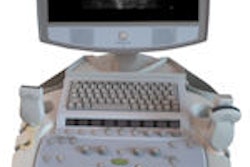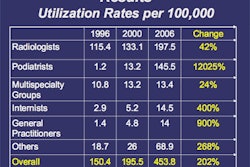Screening all newborn infants for hip dysplasia with a physical exam, and performing an ultrasound examination of infants identified at high risk, can significantly decrease the chance that they will develop early arthritis.
The recommendations are the result of an analysis conducted by researchers at Children's Hospital Boston in Massachusetts and published in the July issue of the Journal of Bone and Joint Surgery (2009, Vol. 91:7, pp. 1705-1709).
Developmental dysplasia of the hip is a leading cause of early arthritis, resulting in total hip replacement. It is the most common congenital defect in newborns, with an estimated incidence ranging from 1.4 to 35 infants per 1,000 live births.
Hip dysplasia is a pain-free condition and can be difficult to detect until adolescence or young adulthood. At that time, a patient can experience abnormal wear of the hip joint or hip arthritis. But if hip dysplasia is identified in infancy, the most common treatment option is for the patient to wear a harness that helps to hold legs in an optimal position for hip development.
Ultrasonography screening of neonates is controversial, because ultrasound identifies many infants with abnormal findings in the hip that may completely resolve if left untreated. While at least one pediatric society recommends clinical screening for hip dysplasia, the U.S. Preventive Services Task Force recently stated that there is lack of clear scientific evidence to recommend routine screening.
Whether and how to screen for dysplasia were the questions posed by a research team led by Dr. Susan Mahan, a pediatric orthopedic surgeon at Children's Hospital. Infants at risk are those with a family history of arthritis, who were breech babies, or who have a clinical examination with indications of hip dysplasia.
The researchers analyzed data from more than 70 research studies and clinical trials dating back to 1939, and then conducted a decision-tree analysis. Their model showed that the expected probability of having a nonarthritic hip by age 60 was highest in association with performing a physical exam of all infants and selective ultrasonography screening for infants with risk factors.
Ultrasonography false-positive rates vary based on the age of the patient when the examination is performed. Ultrasonography identifies developmental dysplasia of the hip in 22% of all neonates, and more than 90% of these hips become normal without any treatment, according to Mahan.
Related Reading
Early ultrasound may help prevent surgery for hip dysplasia, December 5, 2003
Copyright © 2009 AuntMinnie.com



















